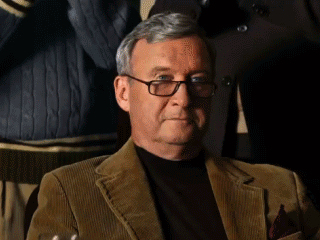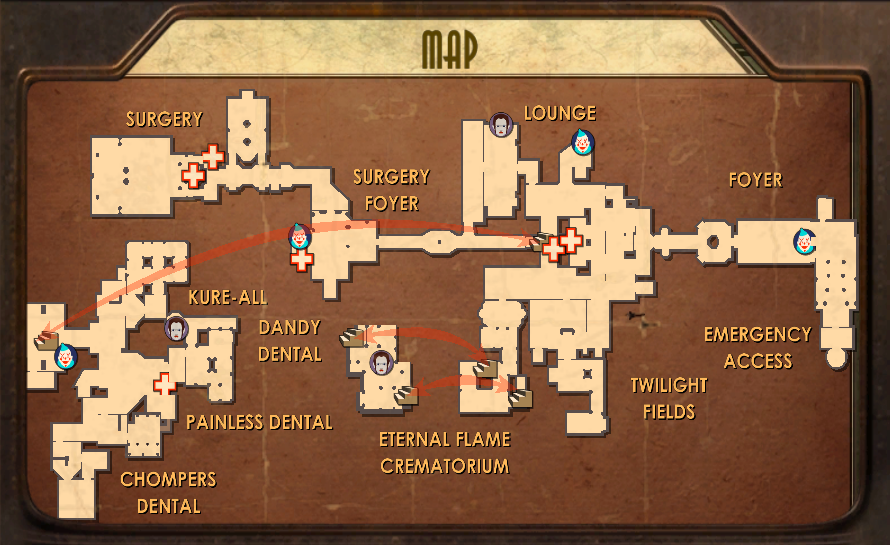Okay, so I finally managed to play through it and here are my thoughts:
- Game is very linear (a lot more linear than Bioshock 1 or even 2 seemed to be)
- This especially manifests in less open/interact able levels than in the first two games (it's basically a straight path forward with a few side rooms every now and then, less of them as the game seems to progress). The only level that slightly reminded me of the previous games was Downtown Emporia, which I explored entirely and then the game ended up railroading me to every single location anyway.
While you had maps with different complexes, entire floors etc. to navigate in Bioshock:
You don't even need a map in Infinite, since it is THAT straightforward in what objective you have and how to get there.
Similarly, there are barely any puzzles or hidden secrets like in Bioshock, where you had to use plasmids to de-ice doors and corridors to get through, use lightning to open locks, use telekinesis to remove obstructions or manipulate stuff (and had to backtrack quite a lot when you got a new power that seemed useful and discover new parts of previous levels), I also remember having to find out door and safe codes (from recordings or hidden somewhere) or shoot through a window into a locked room at something to open a door and similar. It reminded me a lot more of System Shock 2, Bioshock: Infinite was akin your usual corridor-shooter. The only real "puzzles" were during the "Hall of Heroes" part and another one in the graveyard, and they were rather lame ones e.g. "use lightning to power generator right in front of door to open" about three times and a mechanically broken seeming one.
You also had more stuff to do in the previous Bioshocks, from the recurring stealth elements, to taking pictures for research to the Hacking (although the mini-game wasn't exactly beloved).
- The game is also very different from what they had originally shown off, if anyone still remembers this I posted earlier:
Generally with a lot of things on the technical side I thought about how much more awesome this could have been if it was designed and released on "Next Gen" instead of this generation of consoles, since I presume that a lot of the changes and restrictions stem from there. Objects didn't seem destructible to the same degree as shown above and "physics effects" were generally missing or toned down (no breaking vases, objects don't react to vigors as shown, cloth and plants aren't moving at the same level of detail), fire and smoke-effects aren't of the same quality, levels ended up being much smaller than what was prototyped (tears also seem to be playing a lesser part in the gameplay than alluded to with the horse choice) and a lot of textures and objects etc. looked rather "flat".


The overall art design of Columbia is great, but when you look at a fruit basket or a bunch of flowers and it's just a texture with 3 separate fruits laid on top of it, that feels kind of meh. Bioshock (at the time it came out) was technologically rather well off with its water effects and lighting. This one seemed inferior and a step back from what it had achieved in various aspects (although the art design elements and diversity of some of the stuff included especially in the early levels was superb).
- After the short beginning ending with Battleship Bay (in which it was an alright to pretty cool "rollercoaster through interactive story and wonderful environments" kind of game) and the ending after "The Hand of the Prophet", it seems to give up on its initial story focus and provides one contrived story explanation after another to get the player to engage in combat and mow through entire areas for various reasons boiling down to "video game logic", which further mostly boils down to needing object X to continue the plot and having to go through area A through C to get it and then progress. (there's entire rather stupid plot points like Elizabeth being able to knock Booker down after he fought a bunch of elite soldiers in The Hall of Heroes and generally establishing himself as a badass or needing a captured/dead gunsmith and then his tools when Booker runs by about a dozen gun depots and kills an entire army by himself, or when they "need to get to an airship", and what does Booker do to get there? He takes down an even bigger airship instead of commandeering it after killing everyone inside). The entire Shanty Town to Factory levels (the middle part of the game) felt entirely like filler.
- Till very late in the game the "parallel universe" thing is at best contrived and a gimmick (at least the WAY they make you use it), there would barely have been any needed changes to the overall story if the gunsmith was alive instead of dead in the first place - he would have sent you to get his tools afterwards anyway, and instead of Booker saying "we didn't think this through, how do we give get the tools out of here..." the rebels could have gotten them and given to the smith and voilá no need for the second universe change. Later in the game it becomes more of an integral part of the story.
- Limited to two weapons and two "main" vigors (I could never remember which number-key was for which vigor without a UI hint like in Bioshock), it's a very consolized approach and imo makes it all worse than in the previous parts.
- Fighting enemies and bosses etc. comes in the same linear fashion, in the first game a lot of them were optional to begin with (Big Brothers and a few of the Big Sisters) and you could always plan ahead and decide when and where to engage, go and set traps, hack turrets, charm enemies, lure them into places you could manipulate with plasmids etc. In Infinite it's the same old shooting gallery instead of challenging combat puzzles.
- Most vigors were rather pointless after a while, the lightning/shock jokey and fire/devil's kiss one seemed way overpowered in combination with certain clothes and more useful than a lot of the others, especially considering Salts cost. Possession seemed useful every now and then, but costs a lot.
- Aside from a few times when there is no other choice or one runs out of ammo, certain weapons like Carbine and RPG always seemed to be the best combo (Hand Cannon, Shotgun and Sniper Rifle also seemed alright, but very situational instead). There was very little use for a large amount of the other weapons.
- Throughout the game I only managed to die or needed to reload the entirety of two times on Normal. I know there's kind of been an inflation in what "game difficulty" means, but the first Bioshock seemed more challenging at lower difficulties.
- Another thing is the general loot and food system that is a throwback to a lot of similar games and seems to become one of the big "game play" features aside from the shooting itself, but you keep constantly asking yourself how fat Booker should be by this point in the story and how the hell he can manage to keep stuffing things in his face, if he is REALLY supposed to eat those potatoes or chips out of the toilet or from the garbage bin (and if it really would add to his health) as well as to why the hell people keep throwing their money and ammunition away into garbage bins.
There's already safes and weapon caches all around the game world where these things make sense to be placed in. Instead of spreading the money all around, put $700-1300 or more into these special safes and balance the game that way. (Although I guess that would somewhat punish the people that just follow the main plot, but they could balance it with the stuff corpses etc. drop too).
It's certainly not the ZOMGBBQWTF BEST VIDYA GAME EVER the press made it out to be and since people compare it to Dishonored, that is definitely the superior game.
I'd even say that the "game part" is meh to mediocre and the most interesting parts were its artistic style and movie-like story.







![Have Many Potato [2013] Codex 2013](/forums/smiles/campaign_tags/campaign_potato2013.png)





![Glory to Codexia! [2012] Codex 2012](/forums/smiles/campaign_tags/campaign_slushfund2012.png)















